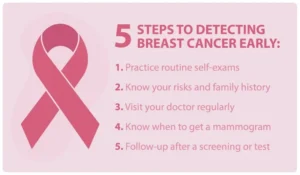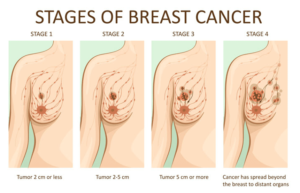Breast Cancer Treatment in Bangalore
It is important to give the best results when it comes to breast cancer, both cosmetically and in terms of survival. Our quest has been to give better results to our breast cancer patients with least possible trauma and this article is the story how we achieve it.
Breast cancer is the most common cancer in women. It develops in the breast tissues, mainly in the lobules or ducts. It occurs when the breast cells mutate and grow out of control,forming a tumor, or a mass of tissue.
The cancer cells can invade the healthy breast tissue and travel to the lymph nodes under the arms. From there, they can travel to other parts of the body and develop into new tumors. The spread of cancer is called metastasis.
Breast cancer is a leading cause of death among women. Fortunately, the mortality rates are decreasing steadily due to advances in screening and treatment. The key to surviving breast cancer is awareness of symptoms, early diagnosis, and timely treatment.
Dr. Sandeep Nayak, one of the best oncologist in India, is at the forefront of his fight against cancer. His dedication towards his patients is unparallel. He constantly pioneers and introduces newer surgical techniques that help him provide innovative and efficient breast cancer treatment in Bangalore, India.
His unwavering passion for his field and his commitment to helping his patients fight off cancer are commendable. He is considered one of the best surgical oncologist in India for his mastery over minimally invasive surgery, namely, robotics and laparoscopic surgery.
On this page, we discussed breast cancer treatment in Bangalore, India.
Let’s start with the
Symptoms of breast cancer
It is estimated that 1 out of 8 women will develop breast cancer. But early diagnosis helps treat it before it spreads. For spotting breast cancer early on, you need to be aware of its symptoms, which are given below:
- Breast pain
- A lump or thickened tissue in or near your breast or in your armpit
- Nipple discharge
- Change in the shape, size, and curve of the breast
- Change in the position and shape of the nipple
- Pitted, dimpled, inflamed, or puckered skin on the breast or nipples
- Inverted nipples
- Scaling, peeling, or flaky skin on the breast or nipples
- A hard mass or lump in your breast, even if it is very tiny
Please note: All lumps and pain in the breast do not mean you have breast cancer. It could be due to a benign cyst. However, it would help if you still have it examined and tested to be on the safe side.
Dr. Sandeep Nayak, an acclaimed cancer specialist in Bangalore, stresses periodic screening for breast cancer because being vigilant helps in early detection of cancer.
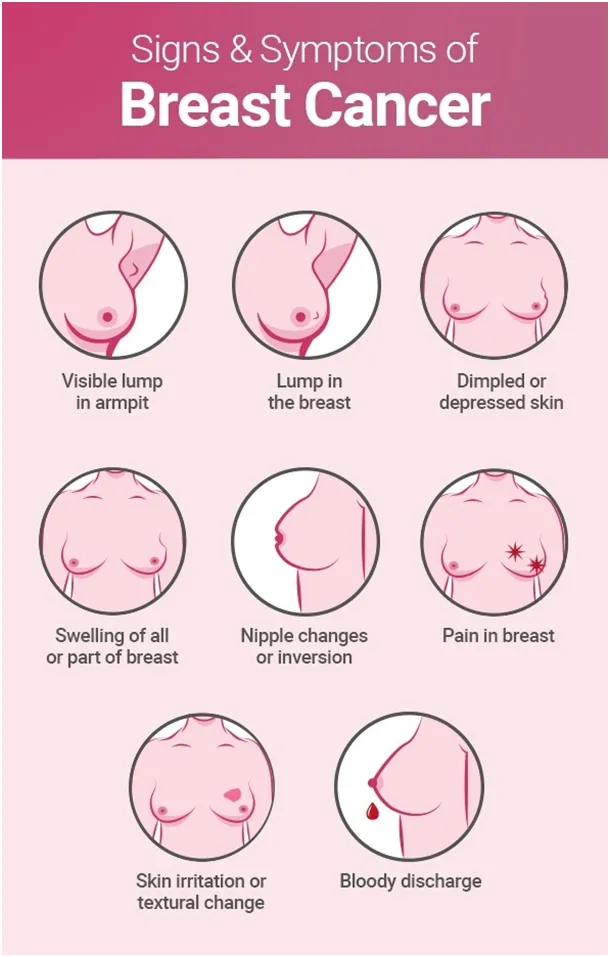
Now let’s discuss,
Different types of breast cancer

Doctors divide breast cancer into two categories invasive and non-invasive. The ones that have not spread beyond the milk ducts or lobules are referred to as non-invasive breast cancer or in situ cancer or stage 0 cancer. Cancer that has spread beyond and to the nearby tissues or distant organs is called invasive breast cancer.
The majority of breast cancers start in the milk ducts and are known as ductal carcinoma.
i. Ductal carcinoma in situ (DCIS)
This cancer develops in the ducts of the breast and are confined to the duct only. These ducts have a covering membrane which hold the cancer cells for some time before they can spread outside this membrane.
ii. Lobular carcinoma in situ (LCIS)
This non-invasive cancer forms in the breast’s milk-producing glands and has not spread to the surrounding tissues. This is similar to DCIS that the cover over the lobules hold the cancer for some time. Generally, LCIS is not considered cancer today. It is only considered a pre-cancer.
iii. Invasive ductal carcinoma (IDC)
It is the most prevalent invasive breast cancer beginning in the milk ducts. It accounts for 80% of the cases. It penetrates the duct wall and spreads to the breast’s fatty tissue.
iv. Invasive lobular carcinoma (ILC)
This cancer originates in the lobules and then invades the nearby tissues and other organs of the body. It makes up approximately 10% of all invasive breast cancers.
Its sub-types include:
- Medullary carcinoma
- Papillary carcinoma
- Tubular carcinoma
- Adenoid cystic carcinoma
- Mucinous carcinoma
- Low-grade adenosquamous carcinoma
Apart from these, there are other less common types of breast cancer, which are:
- Phyllodes tumor
- Paget’s disease of the nipple
- Inflammatory breast cancer
What are the risk factors for breast cancer?
- Genetics
- Age over 50
- Dense breast
- Family history
- Personal history of cancer
- Menstrual history (periods starting before 12 years or stopping after 55)
- Radiation exposure
- Obesity
- Smoking and regular intake of alcohol
- Hormone replacement therapy
How is breast cancer diagnosed?
Dr. Sandeep Nayak, one of the best oncologist in Bangalore, India, will recommend an in-depth breast cancer diagnosis if there is a lump in your breast or the mammography detects some unusual growth.
He will perform a physical exam and ask about your health history. He will also ask you to undergo some tests, such as:
- Ultrasound
- MRI
- Mammogram
- Biopsy
The doctor will remove a tissue sample from the suspected area during the biopsy. It can be done in several ways, including surgical biopsy, core-needle biopsy, fine-needle biopsy, or lymph node biopsy.
The sample is sent to the laboratory to be tested for cancer. If positive, the lab with run further tests to detect the type of cancer you have.
Breast cancer stages
The oncologist classifies breast cancer into stages ranging from 0 to 4, according to the size of the tumor and how far it has spread. Staging is essential for planning the line of treatment.
Doctors properly stage breast cancer according to:
- The tumor’s size
- Whether it is invasive or non-invasive
- If the lymph nodes are impacted
- Whether it has spread to the nearby tissues or organs
Stages of breast cancer (This staging is simplified version)
- Stage 0: The cancer cells have not spread and are still within the ducts.
- Stage 1: The cancer is about 2 centimetres. It has not affected the lymph nodes, or some cancer cells are present in the lymph nodes (less in number).
- Stage 2:The cancer is around 2centimetres and has invaded the nearby lymph nodes, or it is 2-5 centimetres and has not impacted the lymph nodes.
- Stage 3: The cancer is 5 centimetres and has impacted several lymph nodes, or it is bigger than 5 centimetres but has spread to a few lymph nodes.
- Stage 4:Cancer has spread to other organs, such as lungs, liver, bones, and brain.
What are the options for breast cancer treatment in Bangalore, India?
Dr. Sandeep Nayak is one of the best cancer specialist in Bangalore. He is exceptionally experienced in minimally invasive surgery and is considered a leading surgical oncologist in India.He has treated countless breast cancer patients in his career, spanning more than fifteen years.
Depending on your diagnosis, he will plan the best line of treatment that will eliminate cancer and decrease the chances of it returning and metastasizing. The course of your breast cancer treatment in Bangalore, India, will depend on your cancer’s size, stage, and location. Further, Dr. Sandeep Nayak will consider your overall health, age, and opinions regarding the treatment alternatives.
A. Surgery for the breast tumor
Surgery is the primary line of treatment. Nowadays, Dr. Sandeep Nayak, a proficient oncologist in Bangalore, prefers to use minimal invasive breast surgery (MIBS) as it offers quicker recovery and less trauma.
Being a skilled surgical oncologist, he excels in breast-saving cancer surgery with a good cure rate. He has an excellent track record for lumpectomy and mastectomy.
Lumpectomy: This procedure involves removing the breast tumor and a small margin of surrounding healthy tissues. The results of lumpectomy is found top be equivalent to mastectomy. As the surgery is small most of the patients heal much faster.
Breast conservation surgery with oncoplastic surgery: This procedure involves removing the tumor and some surrounding normal tissues while maintaining the natural breast shape. The oncoplastic surgeon aesthetically reshapes the breast.
Skin-sparing mastectomy and reconstruction: In this surgery, the surgical oncologist in Bangalore, Dr. Sandeep Nayak will remove the entire breast tissue sparing the normal skin of breast, followed by reconstruction of the breast. In some patients Nipple also can be spared if it is free from cancer. This surgery gives best cosmetic results at the same time giving best cancer results.
Mastectomy: This surgery involves removing the entire breast which includes the ducts, lobules, areola, nipple, fatty tissue, and some skin. Some or all the lymph nodes in the armpit are also removed as discussed above.
B. Surgery for Armpit Lymph Nodes:
The lymph nodes in the armpit have be removed partly or completely for getting best results in breast cancer treatment. This is done in one of the 2 ways bellow.
Sentinel node biopsy (SNB): Sentinel node biopsy is performed in cases in patients whom the lymph nodes are not found to be involved. This surgery helps decide if cancer has progressed outside the primary tumor into your lymphatic system. We want to avoid complete axillary lymph node dissection as much as possible. SNB is preferred today as the long-term complications are low.
Axillary lymph node dissection: If cancer cells are detected in the sentinel nodes, the surgeon may remove several lymph nodes in the armpit. It can help prevent the spread of cancer. Axillary lymph node dissection increases the risk of arm swelling up. As much as 40% of patients undergoing Axillary lymph node dissection can develop arm swelling. For this reason whenever possible we perform SNB for the patients.
C. Radiation
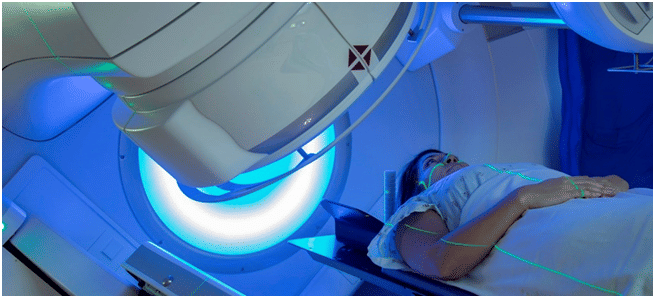
Radiation uses high-powered energy beams of protons and x-ray to eliminate cancer cells. The radiation can be done at the time of surgery or after the wound is healed.
External beam radiation
- This type of radiation is administered through an external machine, five days a week, for 5 to 6 weeks. This starts three weeks after surgery. The technique includes:
- Hypofractionated radiation therapy: Higher doses of radiation are given for fewer days. By this technique, the radiation can be completed in 15 sittings or fractions.
- Conventional EBRT: Doctors use special advanced machines to give radiation for 5 days a week in 25 sittings or fractions.
D. Systematic treatment
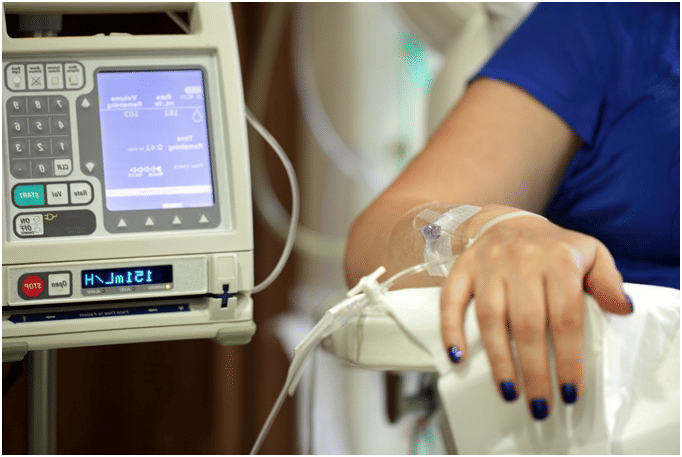
These treatments help control or destroy cancer cells present all over the body. This is to mainly manage the small amount of cancer cells in the body or to shrink a larger or aggressive cancer.
- Chemotherapy – You will be given drugs orally, through injections, or intravenously to eliminate cancer cells. Doctors may give it before surgery (neoadjuvant chemotherapy) or after the procedure (adjuvant chemotherapy).
- Hormone therapy – Certain hormones like oestrogen stimulate the growth of breast cancers malignancies. There are drugs that block the action of these hormones and stop their growth of cancer.
- Targeted therapy – This treatment uses precision drugs to target proteins that govern how the cancer cells grow, divide and spread. The most common of these is trastuzumab (Herceptin) which is used in patients who have Her-2 + cancers.
- Immunotherapy – Immunotherapy uses your immune system to fight cancer. It changes or stimulates the immune system to find and fight cancer cells. This is new way of treating cancer and is used only when all the other treatments have failed.
Why choose us for Breast Cancer Treatment in Bangalore, India?
- Dr. Sandeep Nayak is highly qualified and has 15+ years of experience in treating cancer. He is recognized as one of the best oncologist in India for his proficiency and skills in minimally invasive surgery.
- He offers customized cancer treatment with systematic planning and execution to achieve a positive result.
- He and his team of dedicated cancer specialist in Bangalore offer a multi-disciplinary approach as cancer care is not limited to a single treatment. It needs a well-planned execution.
- Most importantly, Dr. Sandeep Nayak is highly passionate and committed to his profession. He continues to introduce newer surgical techniques that offer his patients a better chance of survival and leading a quality life.
Frequently Asked Questions
What are 5 risk factors for breast cancer?
Five risk factors for breast cancer include:
- Age
- Family history/genetics
- Hormone levels
- Lifestyle factors (diet, exercise, alcohol consumption)
- Previous radiation therapy to the chest.
Can breast cancer be cured?
Breast cancer can often be treated effectively, especially if detected early. Treatment may include surgery, chemotherapy, radiation therapy, hormone therapy, or targeted therapy. The goal is often remission or managing the disease as a chronic condition. Early detection is crucial for successful outcomes.
How does breast cancer affect your body?
Breast cancer can cause lumps, swelling, or dimpling in breast tissue. It may spread to lymph nodes, causing swelling. Fatigue, weight loss, and bone pain can occur if it spreads. Hormonal changes and treatments like chemotherapy can also impact overall health.
Is stage 1 breast cancer curable?
Yes, stage 1 breast cancer is typically curable with various treatments like surgery, radiation, and chemotherapy. Early detection and intervention significantly improve outcomes.

